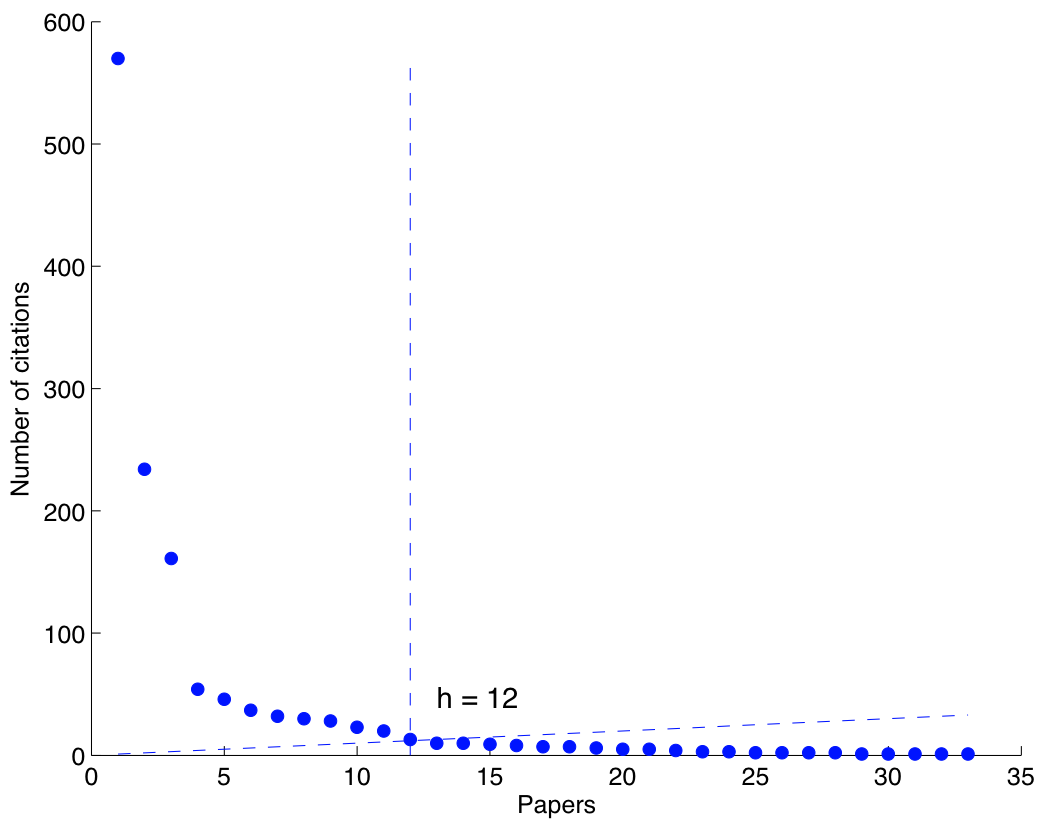Scientific impact, coarsely measured
July 30th, 2010 at 5:45 pm (Productivity, Research)
Recently at work, a new person we are hiring was described as having a high “h-index”. I had never heard of this term, so I looked it up later. The h-index is short for Hirsch index and was proposed by Jorge E. Hirsch as a method for quantitatively characterizing scientific impact through publications. It is defined as:
A scientist has index h if h of [his/her] Np papers have at least h citations each, and the other (Np – h) papers have at most h citations each.
Intrigued, I went off and calculated my own h-index, which (using citation data from Google scholar) is 12:

According to the wikipedia entry on the h-index, that’s a decent score for use in “tenure decisions”, while getting up to about 18 might rate a full professorship. Of course, this is a coarse metric with (like all other simple metrics) its drawbacks. It doesn’t factor in the number of other authors on the paper, or whether the citations are self-citations, or how the paper is cited (in a substantive manner vs. a member of a long list of work cited in the introduction). But who doesn’t enjoy a moment of quantitative navel-gazing? Calculate away!